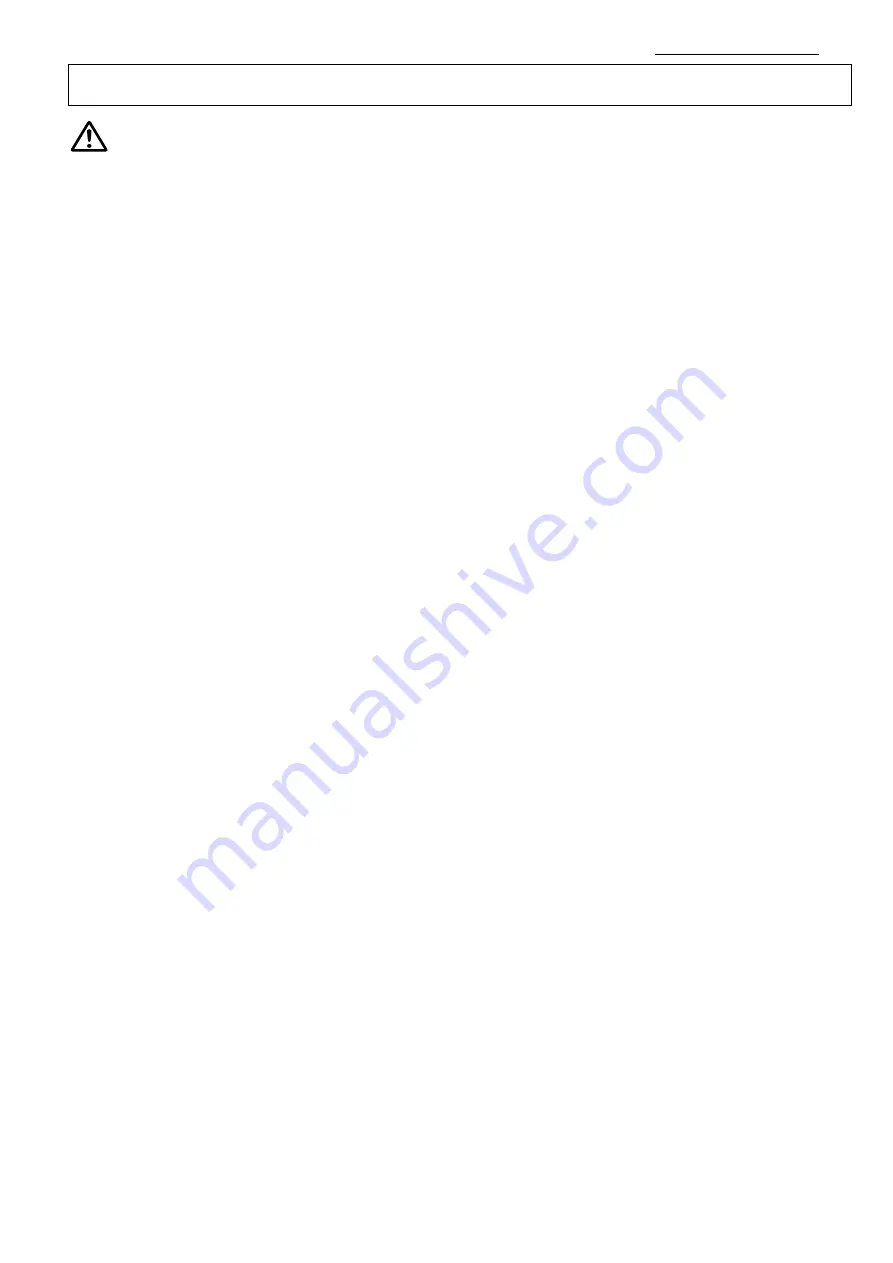
Doc. no.IZ
*
-OMV0005
7
1) Observe the fluid temperature and ambient temperature range.
The operating fluid temperature range is 0 to 55
o
C. The specified ambient temperature range for the Ionizer
is 0 to 55
o
C, and for the AC adapter is 0 to 40
o
C. Avoid sudden temperature change even within specified
ambient temperature range, as it may cause condensation.
2) Do not use this product in an enclosed space.
This product utilizes the corona discharge phenomenon. Do not use the product in an enclosed space as
ozone and nitrogen oxides exist, even though in marginal quantities.
3) Take prevention measures against ozone.
Check that all surrounding equipment have ozone protection measures in place. Perform periodic checks of
the product for deterioration caused by ozone.
4) Supply compressed air when the product is in use.
If compressed air is not supplied, neutralization is not possible and ozone and NOx produced during ion
generation may accumulate, causing adverse effects on the inner parts or peripheral devices. Compressed
air must always be supplied during discharging.
When the product is used for intermittent ion blow, pressure fluctuations can cause instability in the corona
discharge, resulting in difficulty maintaining the offset voltage specification. Ensure there are no problems with
the neutralization performance when the product is used for intermittent ion blow.
5) Environments to avoid
Avoid using and storing this product in the following environments since they may cause damage to this
product. These may cause an electric shock, fire, etc.
a. Areas where ambient temperature exceeds the operating temperature range.
b. Areas where ambient humidity exceeds the operating humidity range.
c. Areas where abrupt temperature changes may cause condensation.
d. Areas where corrosive gas, flammable gas or other volatile flammable substances are stored.
e. Areas where the product may be exposed to conductive powder such as iron powder or dust, oil mist,
salt, organic solvent, machining chips, particles or cutting oil (including water and any liquids), etc.
f. Paths of direct air flow, such as air conditioners.
g. Enclosed or poorly ventilated areas.
h. Locations which are exposed to direct sunlight or heat radiation.
i. Areas where strong electromagnetic noise is generated, such as strong electrical and magnetic fields or
supply voltage spikes.
j. Areas where the product is exposed to static electricity discharge.
k. Locations where strong high frequency is generated.
l. Locations which are subject to potential lightning strikes.
m. In an area where the product may receive direct impact or vibration.
n. Areas where the product may be subjected to forces or weight that could cause physical deformation.
6) Do not use air containing mist and/or dust.
The air containing mist or dust will cause the performance to decrease and shorten the maintenance cycle.
Install a dryer (IDF series), air filter (AF/AFF series), or mist separator (AFM/AM series) to obtain clean
compressed air (air quality of Class 2.6.3 or higher according to ISO 8573-1: 2001 is recommended for
operation).
7) The product does not incorporate a protection to lightning surges.
Operating and Storage Environment
Warning
























